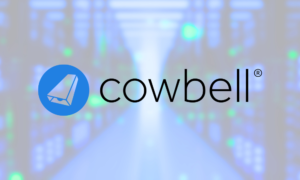CEO and co-founder of TrustLayer, John Fohr (pictured), explained to Insurance Business that AI and machine learning (ML) are ideal for applications where manual and repetitive processes are in place – which are two of the most common issues with insurance processing.
“Insurance verification is a use case that just screams for an AI solution,” he said. “Properly reviewing insurance documents is a personnel bandwidth and time black hole that hasn’t changed in decades.”
Fohr noted that more than 200,000 Certificate of Insurance (COI) requests are made daily in the US, and each certificate must be manually shared and reviewed.
“People are still sharing insurance documents via fax,” he exclaimed. “This protracted process delays the start of projects and relationships, which delays revenue generation and makes for a less accurate process that increases exposure.”
Digital COIs allow for real-time verification of insurance documents at any time and all parties involved, from carriers to insureds, will be able to instantly confirm that the necessary coverage will be maintained for appropriate risk transfer.
Paper and static PDFs open room for error and misrepresentation, and this large pain point in the industry can be alleviated with AI and ML.
“AI has the ability to speed up administrative and compliance task reviewing, as well as verifying insurance, licenses and compliance documents in nearly every industry giving parties a more accurate portrayal of underlying risk,” Fohr explained.
“Additionally, AI can support the development of automated coverage verification which would allow real-time policy event information to be consumed by all stakeholders in the risk transfer chain.”
Tedious tasks that take little human brain power are a major cost to businesses, carriers and brokerages as the world reaches a new level of digital maturity.
“Paying people to essentially shuffle paper costs our economy a figure that’s safely within the billions, or perhaps even hundred of billions each year,” he said. “If we enable AI to take on those tasks just imagine the product innovation that can take place with the refocused human effort.”
AI products create a new sense of connectivity in the insurance world, eliminating laborious processes that have been a burden for brokers, carriers, and insureds.
“It’s almost impossible to discuss digitization without using the word data. Data will flow more smoothly and with more accuracy, leaving all parties with a benefit,” Fohr said. “Of course, with data transfer, security and privacy are critical which is why companies dealing with data must be held to the most rigorous standards.”
With a more refined digital palette, carriers will have better visibility for underwriting, brokers can be better advocates for clients, and administrative burdens are reduced significantly.
“Understanding these practices and walking the fine line between disruption and cooperation is key,” said Fohr. “Industry incumbents are very excited to support and invest in technology and infrastructure to improve this serious industry pain point.”
Even for the most sophisticated organization, managing something as simple as policy expiration is “manual and static” according to Fohr, which poses risks across all sectors.
“We automate this on our platform so that risk is being properly transferred,” he said. “A digital proof of insurance with automatic coverage verification eliminates all the risks and pain points that come with static certificates. You get real-time policy event information and eliminate the error-prone processes that are standard operating procedures today.”
Source: Insurance Business Magazine








